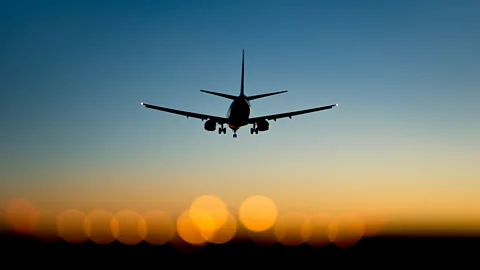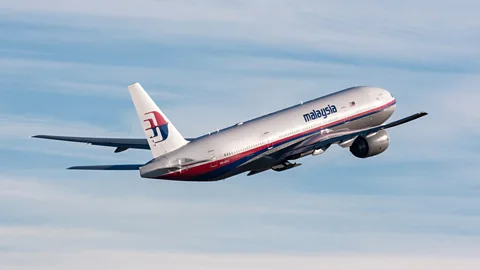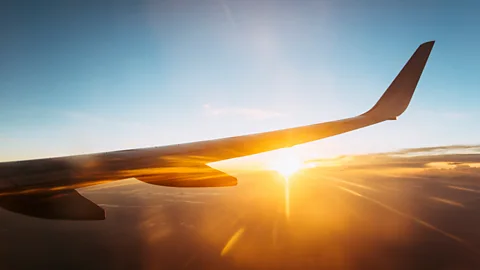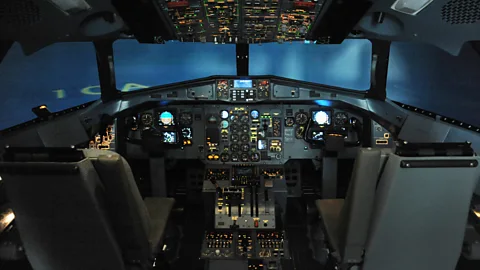How to beat the fear of flying
 iStock
iStockFor many, flying is a necessary evil – but for some it can be torture. How can people overcome the very real fears of taking to the air?
While plane crashes are rare, they are often widely reported; seeing repeatedly graphic images of debris and covered-up bodies simply fills many of us so much fear that we can’t bear the thought of getting on a plane.
Take the two recent Malaysian Airlines disasters. Flight 370 vanished somewhere over the Indian Ocean and Flight 17 was shot down over Ukraine. Two years on, both cases are still making headlines. Then there was the Germanwings disaster last year, when a suicidal pilot flew a passenger jet into a mountainside in the Alps; not much later the Russian-owned flight Metrojet 9268 was blown up by a suspected bomb shortly after take-off from Egypt.
The experts, of course, simply point to the stats: your fear of flying is irrational, because you’re much more likely to die in a car crash than in a plane accident. Indeed, safety statistics by an airline association IATA show that in 2015 more than 3.5 billion people flew on commercial aircraft. During that time, there were 68 accidents, four of which resulted in 136 fatalities. Add in the Germanwings and Metrojet disasters, and the number of deaths is bumped up to 510.
 iStock
iStockThe World Health Organisation says that there were 1.25 million road traffic deaths globally in 2013. Overall, car travel is about 100 times deadlier than flying. Meanwhile, the two things you’re most likely to die from are heart disease and cancer.
Still, our fear of flying won’t budge. In the US alone, 17% of Americans admit that they are afraid to fly (according to a 2010 survey by Boeing). Some are terrified of crashing; others can’t cope with being in an enclosed space with no way to escape. And then there are the famous cases. Movie director Wes Anderson (Grand Budapest Hotel, The Royal Tenenbaums) prefers travelling to Europe by boat. The late rock star David Bowie opted for boats and trains after a stormy flight from Cyprus in the early 70s; he started flying again in the 1980s, but stopped again after suffering a heart attack and following the birth of his daughter Lexi. Kate Winslet, meanwhile, reportedly travels in a different plane than her husband, to ensure they don’t both die in a crash and leave their kids without parents.
“Unfortunately, there is no single explanation for why someone would develop such a phobia – there are a lot of potential reasons,” says Matthew Price, a clinical psychologist at the University of Vermont, who researches anxiety disorders. There are people who are afraid of flying because they’ve never stepped on a plane before, or have had some prior negative flying-related experience. “It may have been an actual flight, learning about a plane crash, or being anxious about being in an enclosed space.”
For instance, many people suddenly developed a fear of flying after 9/11. According to psychologist Gerd Gigerenzer of the Max Planck Institute for Human Development, in the year after the tragedy this fear prompted thousands of Americans to opt for driving. It resulted in a decline in air travel, but also saw an extra 1,595 people die in car crashes, because they misunderstood the risk of driving and exaggerated the probability of dying in a plane crash.
There is another category of people who are afraid of flying, and that’s because of anxieties in other areas. It could be a fear of loss of control, or of enclosed spaces, or even the fear of fear, says psychologist Robert Bor, a pilot and psychiatric consultant to the Royal Air Force. The fear can also be prompted by something that is not directly related to aviation, such as stress at work, marriage difficulties, or a sick child at home.
 iStock
iStockOne factor that is making people worry is precisely what is meant to protect them: safety procedures at airports and on board. Anti-terrorism measures at airports make some of us think of criminals wanting to blow planes up, and safety videos prior to departure remind us that crashes do happen. So those prone to panic may want to avoid watching the safety video, but that’s a mistake.
“Those who have a plan for getting out of the plane because they watched the safety demonstration are much more likely to do ok, and those who don’t might find themselves not in the right frame to get out of the aircraft,” says Bor. Take the recent crash-landing of an Emirates plane in Dubai, when many passengers started grabbing their belongings, which added to the risk of evacuating the airplane. “During the safety demonstration, we’re told to leave our things and get out of the airplane quickly, but people do sometimes do extraordinary things when they are faced with danger that they had not anticipated,” says Bor.
Luckily, fear of flying is treatable, and there isn’t a shortage of ways to deal with it. There are of course personal strategies – some of us don headphones or drink alcohol; others take anti-anxiety medication. Price recommends breathing exercises, slow deep breathes in through the mouth so that your belly expands while your chest remains relatively still, and then slowly out through the nose. “It can sometimes be helpful to repeat a soothing mantra while doing this like ‘calm’,” he adds.
Perhaps a better initial strategy though for those without any experience of flying or with some prior negative association is learning about how airplanes work, says Bor – why heavy metal objects like planes can indeed take off and fly, how air traffic control keeps planes at a distance from each other, and what happens during air turbulence.
The second, anxiety-prone group, might need hypnotherapy, psychotherapy, or cognitive behavioural therapy. Here the idea is to identify the cycle around the anxiety, how it builds up and carries on, how it can sometimes generate panicky feelings, and – most importantly – how to cope with them.
One approach is to read books on self-coping mechanisms, another is to visit a doctor. “You may only need one visit, not a 100 years on the couch with Sigmund Freud. It’s very treatable – but if you ignore it, it tends not to go away,” says Bor.
 iStock
iStockPrice and Bor agree that the best way to overcome the phobia of flying is controlled exposure. Following the old saying ‘you have to face your fears,’ a person can systematically and gradually expose themselves to the various stages of flying, under guidance of a trained clinician. Traditionally, this training has been taking place on board, when therapists (for a lot of money) accompany you onto a plane and talk to you to alleviate your fears.
Another option of exposure involves virtual reality, where you can experience the various stages of flight even while you stay firmly on the ground. In the past, this was done with the help of simulators, with screens featuring the inside of a virtual plane on a virtual airfield, accompanied by the noise of engines. More recently, though, a new kid on the block has appeared: a VR headset.
Price analysed multiple studies on VR and flying, and concluded that VR is indeed efficient and effective in treating aviophobia. “For example, it may be helpful for the client to experience a very long take off,” says Bor. “Take off in an actual plane can only be as long as the runway. Take off in a virtual plane, however, can be drawn out longer because the stimuli are under the control of the therapist.” If you usually get stressed out on the way to the airport, or at the boarding gate, or during the cruising phase of the flight, the therapist can get you to experience exactly that in careful, controlled stages. It’s also possible to instantly change the time of day, the weather, your seat on the plane and even the pilots’ mood – depending on what worries you most.
To monitor anxiety levels, biometric sensors can be attached to a client’s fingers. That’s exactly what tech reporter Luke Johnson of the website Wearable did, when he decided to experience the VR treatment first hand with the help of therapist Michael Carthy, who specialises in phobias.
VR targets the mind’s subconscious part, and the headset itself is a complementary tool to the therapy, writes Johnson. “This sparing use gives it even more of an impact though. You don’t become desensitised to the virtual situations, instead it helps you face those moments of discomfort intermittently, and with purpose.”
 iStock
iStockJohnson was surprised to discover that he later managed to control his fear on a real flight much better than ever before. “Taking slow, deep breaths, smiling like a loon and holding my shoulders back, I didn’t feel afraid anymore. I felt comfortable,” he writes.
Barbara Rothbaum, a psychiatrist at Emory University School of Medicine in Atlanta, Georgia, compared exposure therapy with a virtual airplane with that of a real airplane. “93% of participants flew after only eight sessions of treatment in both conditions,” she says. The first four sessions teach people anxiety management techniques, she explains, for example, how to identify unhelpful and irrational thoughts (for example, “we’re going to crash,”) and correct them.
The last four sessions then use virtual reality to help the people confront flying in a therapeutic manner so that their anxiety decreases. “It seems to work equally well to use a real airplane or a virtual airplane, so the advantages of VR in this case is primarily feasibility – it’s cheaper and easier and you can take off and land as many times as you need all within the 45-minute therapy sessions without leaving the office,” says Rothbaum.
Some people, however, strike out on their own, without a therapist. US businessman Clay Presley survived the 2009 Hudson crash, and was left with a fear of flying. So how did he overcome it? By becoming a pilot himself. Not a solution for everyone, but perhaps some aviophones might follow his example.
Join 700,000+ Future fans by liking us on Facebook, or follow us on Twitter, Google+, LinkedIn and Instagram.
If you liked this story, sign up for the weekly bbc.com features newsletter, called “If You Only Read 6 Things This Week”. A handpicked selection of stories from BBC Future, Earth, Culture, Capital, Travel and Autos, delivered to your inbox every Friday.
